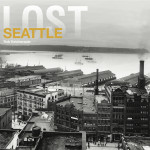Exploring the myth of accessibility on Tokyo's streets.
There are three most basic aspects of accessibility on streets: (1) can you navigate it in a wheelchair; (2) can you navigate it with a cane; (3) do traffic signals have audible and physical cues.
There are almost no accessible signals in Tokyo, so there is no myth to dispel with regards to them.
There have been yellow leads for cane users on the streets of Tokyo for decades. Today I will not deal with the myth of their origin. I still firmly believe that they are not the result of benevolent legislation, and instead are some scheme by tile manufacturers to bilk the populace. If you've been to Tokyo, you know that there is something going on with the tile industry. I have not yet begun to unravel the tile conspiracy, so for now let's set aside the issue of cane-navigation.
Instead I will address the issue of wheelchair accessibility. In Japan this is referred to as "barrier free". First of all, as you see here, most streets have no barriers to begin with.
So here's a street with barriers. Literally, there's a rail on the edge to separate sidewalk and roadway traffic. Up ahead is a curb at the corner of the sidewalk. Rather than a "curb ramp", the wheelchair-width runways that American corners have, here the entire corner is rolled over and the curb height fairly low. Why? Was every streetcorner in Tokyo designed for wheelchair use? I posit that the answer is "no". The real answer is right in front of you.
Above, a delivery of water is in progress. Here, a man pushes a cart with empty beer bottles and crates, presumably back to the neighborhood liquor store. He came out of a restaurant's back door. This cart, a "daisha" (台車) or "wheeled platform", is the standard tool used by every small business owner or delivery person in Japan. You can't walk through any shopping district in the morning without seeing them. And, I seriously believe that their small wheels are the cause of "barrier free" streets in Japan.
Although most streets lack sidewalks, they still have a short curb at the edge of the property line, usually just before a covered gutter. Because the curbs are all uniform size, a number of companies sell lifts to remove this barrier for deliveries. In this picture a broad plastic one is used for access to a warehouse and for van parking. There are also metal and concrete lifts.
The candy company Glico (pictured here) and the health drink company Yakult both have neighborhood offices that send out fleets of carts to nearby office buildings each morning. It's amazing to think that hand trucks, the standard moving and delivery tool in America, may be the cause of wheelchair-unfriendly streets, because they can go up and over obstacles so easily. The only problem left in Tokyo is the steep streets. Recently I walked past a Glico delivery woman who grunted "Man, I can't take this anymore!" as she kicked off the brake after a delivery.
The four-wheeled cart is so universal, it's even used by this office building to make their trees mobile for cleaning and access.
Another wonderful spin-off is what I call "babies in a box". It's a playpen on wheels, and every daycare in Tokyo has one. At around 11am you can see the toddlers getting taken for walks. It's amazing what you can do with four wheels and a platform.
